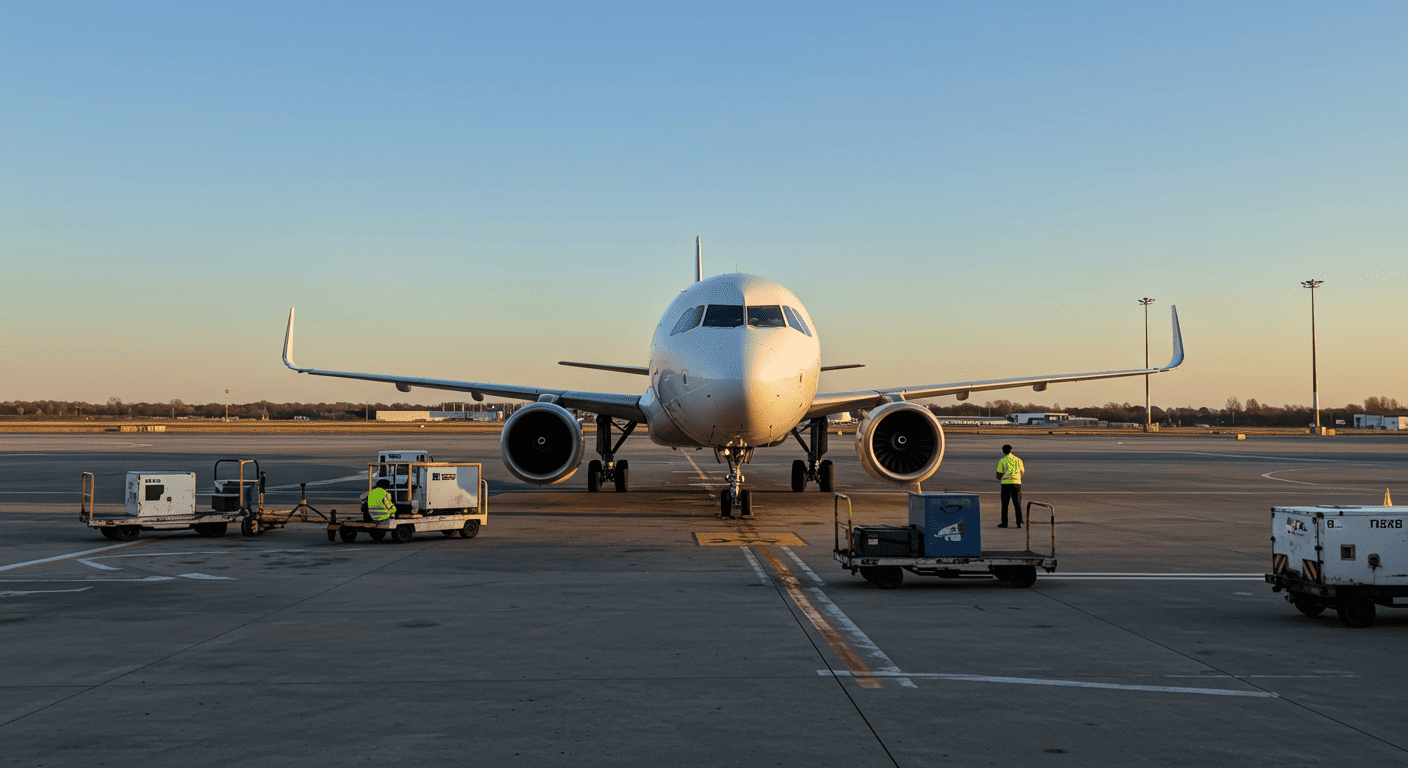The Airbus A320neo has quickly become the preferred choice for airlines modernizing their fleets, capturing a massive share of the single-aisle market. Its success is built on next-generation engines that deliver significant fuel savings and a much quieter ride. These core advantages establish the A320neo as a leader in its class.
Introduction to the Airbus A320neo
The Airbus A320neo represents a significant evolution for one of the world’s most popular single-aisle aircraft. The name “neo” stands for “new engine option,” highlighting its core upgrades: advanced engines and improved aerodynamics. These innovations combine to deliver significant gains in performance and sustainability, setting a new benchmark for short- to medium-haul flights.
Key to these enhancements are two next-generation engine options and distinctive “Shark let” wing tip devices. Together, they achieve a 15-20% improvement in fuel efficiency over predecessors. This improved performance results in lower emissions, a significantly reduced noise footprint, and substantial operational savings for airlines.
The A320neo quickly became a market leader after its first flight in 2014 and entry into commercial service in 2016. Its blend of efficiency, reliability, and passenger comfort appealed to airlines worldwide, leading to an order book of over 11,000 aircraft. This success solidifies its position as a top choice for carriers modernizing their fleets and improving operational performance.
Key Specifications of the A320neo
The A320neo is not a single model but a versatile family of aircraft. It comprises the A319neo, A320neo, and A321neo, each tailored for specific routes and passenger loads to give airlines exceptional operational flexibility.
The A320neo family’s performance extends well beyond short-haul flights. The A321XLR variant, for instance, has a maximum range of 4,700 nautical miles (8,700 km), enabling it to connect continents on routes previously unviable for single-aisle jets. This extended range, paired with significant fuel savings, allows airlines to expand their networks and offer new direct connections to travelers.
To better illustrate the differences, here is a breakdown of the key specifications for each member of the A320neo family:
| Specification | A319neo | A320neo | A321neo |
|---|---|---|---|
| Passenger Capacity (Typical 2-Class) | 120–150 | 150–180 | 180–220 |
| Max Seating | 160 | 194 | 244 |
| Length | 33.84 m (111 ft) | 37.57 m (123 ft 3 in) | 44.51 m (146 ft) |
| Range | 3,750 NM (6,940 km) | 3,400 NM (6,300 km) | 4,000 NM (7,400 km) |
| Maximum Takeoff Weight (TOW) | 75.5 tonnes | 79 tonnes | 97 tonnes |
Engine Options for the A320neo
Airlines can choose between two advanced engine options: the CFM International LEAP-1A and the Pratt & Whitney PW1100G-JM. This flexibility allows operators to select the engine that best aligns with their operational and maintenance strategies.
These engines are the main reason for the A320neo’s acclaimed fuel efficiency and lower CO2 emissions. They also significantly reduce the aircraft’s noise footprint, which improves in-cabin comfort and benefits communities near airports.
The benefits of these new engines are amplified by the A320neo’s aerodynamic enhancements, particularly the Shark let wing tips. This combination of advanced propulsion and refined aerodynamics enables the aircraft’s extended range and superior performance, solidifying the A320neo family’s leadership in the single-aisle market.
Fuel Efficiency and Environmental Impact
The Airbus A320neo achieves a 15-20% improvement in fuel efficiency over its predecessors. This gain comes from the combination of its new-generation engines and aerodynamic refinements, particularly the iconic Shark let wing tips. For airlines, this results in both substantial operational cost savings and a proportional drop in CO2 emissions, making the A320neo a key part of any strategy to reduce carbon footprints.
Beyond fuel savings, the A320neo also significantly reduces noise pollution. Its advanced engine technology cuts the aircraft’s noise footprint by up to 50% compared to older jets, benefiting communities near airports. This quieter operation allows for more flexible flight schedules and helps the aircraft meet the most stringent ICAO standards, making it a welcome addition at noise-sensitive airports.
The A320neo is also designed for long-term sustainability. The aircraft is fully certified to operate with blends of up to 50% Sustainable Aviation Fuel (SAF). This capability allows operators to immediately reduce their net carbon emissions even further, positioning the A320neo family as a practical step toward more sustainable air travel.
Passenger Experience on the A320neo
Inside, the Airbus A320neo features the modern Airspace cabin, which creates an open and comfortable passenger experience. A key feature is the customizable LED mood lighting, capable of simulating different times of day to help reduce jet lag and create a more relaxing atmosphere.
The cabin also includes practical, passenger-focused improvements. Larger overhead bins, for instance, offer significantly more space for carry-on luggage and help speed up the boarding process. Seats are ergonomically designed for comfort, while modern amenities like personal USB ports and seat-back entertainment systems are common fixtures.
One of the most noticeable upgrades is the quietness of the journey. Thanks to its advanced engines, the cabin is a quieter and less fatiguing environment, making it easier to relax, work, or hold a conversation. Airlines offer various configurations—from multi-class layouts to seats with extra legroom—to ensure the A320neo delivers a premium experience for every traveler.
Operational History and Market Presence
Since entering service in 2016, the Airbus A320neo has rapidly become a major force in the single-aisle aircraft market. Its combination of fuel efficiency, passenger comfort, and operational reliability appealed immediately to airlines worldwide. This popularity is reflected in the numbers: with over 11,000 orders and thousands of delivered aircraft, the A320neo family has captured approximately 60% of the market share and established a strong lead over competitors like the Boeing 737 MAX.
With more than 130 customers across every continent, the aircraft’s appeal is truly global. Its versatility makes it a fit for diverse carriers, from major international airlines to low-cost operators. Industry leaders like IndiGo and Lufthansa have made the A320neo a cornerstone of their modern fleets, leveraging its performance across extensive networks. This widespread adoption is a testament to the aircraft’s ability to meet a vast range of operational demands.
Beyond impressive sales figures, the A320neo has earned a reputation for reliable performance in daily service. The global fleet has successfully completed millions of flights, accumulating a vast number of flight hours. This track record demonstrates the aircraft’s exceptional reliability and efficiency, solidifying its status as a top choice for airlines modernizing their fleets for a sustainable future.
A320neo Variants and Their Differences
The A320neo’s market success comes from its versatility as an entire family of aircraft. While all variants share the same core upgrades—next-generation engines and Shark let wing tips—each model is tailored to meet specific airline needs for capacity and range.
The family offers three distinct sizes to cover various market segments:
- A319neo: The smallest member, ideal for routes with lower passenger demand or airports with operational constraints.
- A320neo: The baseline and most popular model, offering a balanced combination of capacity (typically around 180 passengers) and range for a wide variety of routes.
- A321neo: The largest variant, designed for high-density routes and capable of seating up to 244 passengers.
Building on the A321neo platform, Airbus introduced two extended-range versions that have redefined long-haul travel with narrow-body aircraft:
- A321LR (Long Range): Incorporates additional fuel tanks to extend its range to 4,000 nautical miles, enabling new routes like transatlantic flights.
- A321XLR (Extra Long Range): Extends the boundaries further with a range of 4,700 nautical miles, allowing operators to fly long-haul routes with the efficiency of a single-aisle jet.
Future Developments and Innovations
Despite its market-leading position, the Airbus A320neo family is continually evolving. Airbus is committed to a strategy of continuous improvement—often called a “neo-plus” initiative—to keep the aircraft at the forefront of single-aisle technology. This approach focuses on integrating next-generation systems and enhancing performance to meet the changing demands of airlines and regulators.
The flight deck is a key area of innovation. Airbus is developing next-generation cockpit concepts to prepare the A320neo for the future, incorporating tighter system integration and advanced AI-based pilot support tools. The goal is to reduce pilot workload, improve situational awareness, and enhance the aircraft’s already high safety standards, ensuring its operational efficiency for decades to come.
Sustainability and versatility remain central to the A320neo’s future. Airbus is committed to maintaining the family’s adaptability to a wide range of routes while improving environmental performance. This includes ongoing improvements in fuel efficiency and ensuring full compatibility with Sustainable Aviation Fuels (SAF). By embracing these innovations, Airbus not only extends the A320neo’s market resilience but also solidifies its role as a cornerstone of modern, sustainable aviation.
Read more:
- Airbus A320: Specifications, Features, and Seat Maps
- Airbus A340-300: Features, Specifications, and Performance
- Airbus A220: Features, Specs, and Benefits of the A220 Family
- Airbus Beluga: The Unique Transport Aircraft
- Airbus A340-600: Features, Specifications, and Performance
- Airbus A350: Features, Specs, and Innovations
- Airbus A319: Specifications, Seat Maps, and Features
- Airbus A321neo: Features, Specs, and Benefits
- Airbus A321: Specifications, Features, and Seat Maps
- Airbus A380: The Ultimate Guide to the World’s Largest Passenger Aircraft
- Airbus A330-300: Specifications, Seat Maps, and Amenities
- Airbus A350-900: Features, Specs, and Seating Guide
- Airbus A330: Specifications, Features, and Seat Maps

